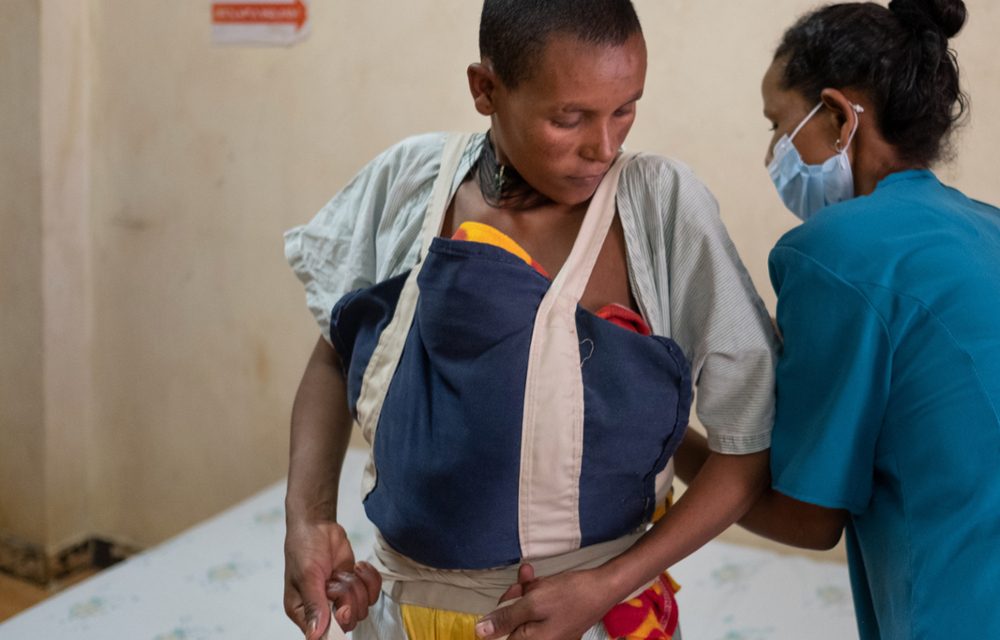The Emory University’s Nell Hodgson Woodruff School of Nursing received $11.8 million from the U.S. Department of Health and Human Services’ Health Resources and Services Administration (HRSA) on Oct. 4 and opened a new $20.6 million learning center on Sept. 16.
Alongside these two School of Nursing accomplishments, Nell Hodgson also received the American Academy of Nursing (AAN) Edge Runner designation on the same day as the learning center’s ribbon cutting for their philanthropic efforts and successful implementation of the Collaborative Kangaroo Mother Care (KMC) model in Ethiopia.
Ann Swan, the executive director of the Emory Nursing Learning Center and vice president of the School of Nursing, said a new learning center will help increase the number of nurses at Emory. She also mentioned the school’s goal to increase their enrollment by 2025. This, she believes, will ameliorate the nursing shortage caused primarily by a profusion of older workers, who make up a considerable majority of nurses, quitting during the COVID-19 pandemic.

Antenatal care nurse Meseret Alemayehu helps Tsehaynesh Tigab wrap her newborn to her chest in Ethiopia on March 25, 2021. Courtesy of Emory University
Quyen Phan, an assistant professor at the School of Nursing and a recipient of two HRSA grants, said she was happy that the funding will prepare more clinical faculty, who will, in turn, prepare more nurses.
“Being able to walk alongside communities as they seek equitable and sensitive care is a wonderful opportunity, and we are grateful to HRSA for the grants to make it possible,” Phan wrote in an email to the Wheel.
Emory’s Maternal and Newborn Health in Ethiopia Partnership received the AAN Edge Runner designation award — which awards nursing models driven by both “science and compassion” — for its work in helping regions affected by high maternal and infant mortality reduce those rates. To improve and combat Ethiopia’s Maternal and Newborn Health, the Partnership has provided education and training activities to Ethiopian nurses.
Improving maternal and newborn health while also expanding the School of Nursing to other countries, Emory established the Emory Ethiopia Office in 2010. Director of the Center for Research on Maternal and Newborn Survival Lynn Sibley, Assistant Professor on the clinical track at the School of Nursing John Cranmer and Project Director and Co-principal Investigator for the Maternal and Newborn Health in Ethiopia Partnership Abebe Gebremariam spearheaded this initiative and received several grants to fund it, including $5 million from the Bill & Melinda Gates Foundation and, in March 2021, a $4.5 million grant from Emory shared with UNICEF, the World Health Organization and universities in Ethiopia.Since then, the project has grown expeditiously, expanding to four locations in Ethiopia: Bahir Dar, Semera, Addis Ababa and Assosa, Cranmer said.
The Partnership is officially registered as a nonprofit humanitarian organization in Ethiopia, Cranmer added.
However, the KMC model distinguished the School of Nursing and its Ethiopia partnership as an Edge Runner. While assessing the strengths of Emory’s KMC model, Cranmer said that one of the core advantages is that collaborative partnership is “woven into the entire design, testing, delivery and optimization.”
Developed in 1979 by Colombian researchers Edgar Ray Sanabria and Hector Martinez-Gomez, KMC was first implemented by initiating skin-to-skin contact and breastfeeding from the mother within 48 hours after birth. This method benefits malnourished, sick or underweight (under 4.4 pounds) babies.
“It’s very difficult to establish big centers like in the West, to be able to care for these low birth weight babies,” Abebe said. “But KMC has been proven to be almost as equally effective as those different newborn survival technology gadgets and it’s very cheap.”
Recent studies have shown child morbidity had decreased by 25% with Collaborative KMC. In poorer countries that lack access to technology and healthcare, KMC provides a less costly alternative compared to expensive incubators, Abebe added.
Despite their efforts, Ethiopia still struggles with staggering maternal and infant mortality rates. The country ranked No. 4 in maternal deaths among countries like Nigeria, India, and The Democratic Republic of Congo in 2017, with the infant mortality rate at 31.019 deaths per 1,000 live births.
Cranmer said that over the past 10 to 15 years, Ethiopia has reduced the mortality of children under the age of five, but the mortality rate has remained consistently high within the first 28 days of a newborn’s life.
Albeit, 73.5% of births in Ethiopia took place at one’s home. Cranmer added that the infant mortality rate has remained consistently high because many Ethiopians lack access to care. He noted how 80% living in rural communities also contributed to the awareness of these services being very low.
Implementing KMC into Ethiopia presented challenges at first.
“The team had to do interventions addressing all directions from the healthcare providers, the health policy leaders, as well as from the community and mothers in the family,” Abebe said. She also noted that in the last two years, the Partnership had to reduce the number of visitors who came due to the COVID-19 pandemic.
Looking forward, the Partnership is focusing on developing KMC with other institutions in Ethiopia and expanding their interests in other endeavors as well, Cranmer said, specifically, respiratory support, resuscitation, bubble CPAP and care for low birth weight newborns.
Clement Lee (he/him) (24Ox) is from Virginia Beach, Virginia, and is on the pre-BBA track. Outside the Wheel, Clement can be found reading new books or going on long runs in the woods.






